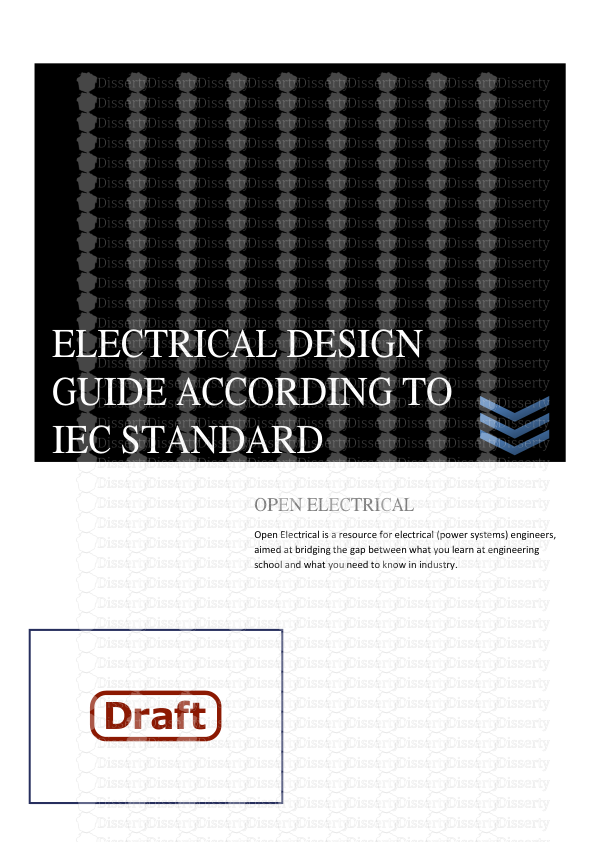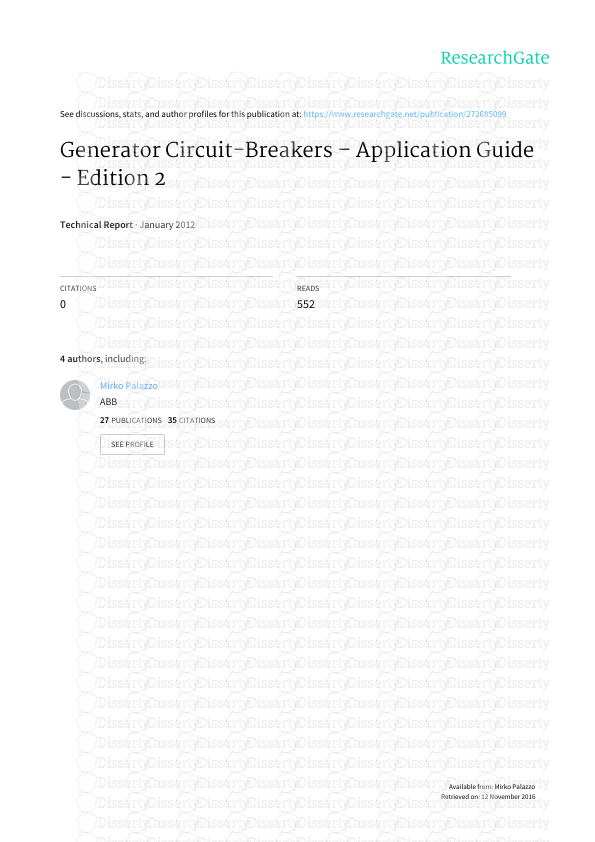The Electricicans Guide to the 16th Edition IEE Regulations Page 1 of 296 to th
The Electricicans Guide to the 16th Edition IEE Regulations Page 1 of 296 to the 16th Edition IEE Regulations The lEE Regulations, BS 7671 and this Guide Chapter 1 The IEE Regulations 1.1 This Electrician's Guide The Institution of Electrical Engineers (lEE) has published an 'On-site guide' with the 16th edition of its Regulations, which is intended to enable the electrician to carry out 'certain specified installation work' without further reference to the Regulations. Publicity for this guide before its issue stated 'the electrician is generally not required to perform any calculations'. When printed, this was changed to 'to reduce the need for detailed calculations'. In the opinion of the Author, this attitude is incorrect. It assumes that behind every electrician there is a designer who will provide him with precise details of exactly what he is to do. This is, of course, what happens in some cases, but totally ignores all those electricians (probably a majority) who are left to work entirely on their own, who have to do their own calculations and make their own decisions. These same electricians are subject to the law, so that a failure to implement the IEE Regulations which leads to an accident, may result (and has resulted) in a prison sentence. It would be foolish to suppose that this Electrician's Guide could totally replace the complete Regulations, which are made up of over two hundred and fifty A4 pages, together with a total of eight associated 'guides'. Certainly, every electrician who does not have the advantage of expert design advice should equip himself with the complete Regulations and with the associated guides. However, it is the belief of the Author that this Electrician's Guide will help the average electrician to understand, and to implement, these very complicated Regulations in the safest and most cost- effective way possible. Note on Supply Voltage Level For many years the supply voltage for single-phase supplies in the UK has been 240V +/- 6%, giving a possible spread of voltage from 226V to 254 V. For three-phase supplies the voltage was 415 V +/- 6%, the spread being from 390 V to 440V. Most continental voltage levels have been 220/380V. In 1988 an agreement was reached that voltage levels across Europe should be unified at 230V single phase and 400V three-phase with effect from January 1st, 1995. In both cases the tolerance levels have become -6% to +10%, giving a single-phase voltage spread of 216 V to 253 V, with three-phase values between 376V and 440 V. It is proposed that on January 1st, 2003 the tolerance levels will be widened to +/- 10%. Since the present supply voltages in the UK lie within the acceptable spread of values, Supply Companies are not intending to reduce their voltages in the near future. This is hardly surprising, because such action would immediately reduce the energy used by consumers (and the income of the Companies) by more than 8%. In view of the fact that there will be no change to the actual voltage applied to installations, it has been decided not to make changes to the calculations in this book. All are based on the 240/415V supply voltages which have applied for many years and will continue so to do. The Electricicans Guide to the 16th Edition IEE Regulations Page 2 of 296 In due course, it is to be expected that manufacturers will supply appliances rated at 230 V for use in the UK. When they do so, there will be problems. A 230 V linear appliance used on a 240 V supply will take 4.3% more current and will consume almost 9% more energy. A 230 V rated 3 kW immersion heater, for example, will actually provide almost 3.27kw when fed at 240 V. This means that the water will heat a little more quickly and that there is unlikely to be a serious problem other than that the life of the heater may be reduced, the level of reduction being difficult to quantify. Life reduction is easier to specify in the case of filament lamps. A 230 V rated lamp used at 240 V will achieve only 55% of its rated life (it will fail after about 550 hours instead of the average of 1,000 hours) but will be brighter and will run much hotter, possibly leading to overheating problems in some luminaires. The starting current for large concentrations of discharge lamps will increase dramatically, especially when they are very cold. High pressure sodium and metal halide lamps will show a significant change in colour output when run at higher voltage than their rating, and rechargeable batteries in 230 V rated emergency lighting luminaires will overheat and suffer drastic life reductions when fed at 240V There could be electrical installation problems here for the future! 1.2.1 International Basis All electricians are aware of 'The Regs'. For well over one hundred years they have provided the rules which must be followed to make sure that electrical installations are safe. A publication such as 'the Regs' must be regularly updated to take account of technical changes, and to allow for the 'internationalisation' of the Regulations. The ultimate aim is that all countries in the world will have the same wiring regulations. National differences make this still a dream, but we are moving slowly in that direction. The 15th Edition, when it was published in 1981, was the first edition of the IEE Regulations to follow lEC guidelines, and as such was novel in Great Britain. It was totally different from anything we had used before. The 16th Edition has not come as such a shock; certainly there are changes when we compare it with 'the 15th', but the two follow similar paths to reach the common destination of safety. Any electrician who has come to terms with the 15th should have little difficulty in working to the 16th. A word is necessary about the identification of parts of this Electrician's Guide and of the IEE Regulations. In this Electrician's Guide, Regulation numbers are separated by a hyphen and indicated by placing them in square brackets. Thus, [514-06-03] is the third Regulation in the sixth group or subsection of Section 4 of Chapter 1 in Part 5. To avoid confusion, sections and sub- sections of this Electrician's Guide are divided by full points and enclosed in curly brackets. Hence, {5.4.6} is the sixth sub-section of section 4 of chapter 5 of this Electrician's Guide. 1.2.2 The Sixteenth Edition This latest Edition of the lEE Wiring Regulations was published in May 1991. It was permissible to use the 15th Edition for installations put into service before January 1st, 1993. However, from now onwards the 16th Edition must be used. The current trend is to move towards a set of wiring regulations with world-wide application. IEC publication 364 'Electrical Installations of Buildings' has been available for some time, and the 16th Edition is based on many of its parts. The European Committee for Electrotechnical Standardisation (CENELEC) uses a similar pattern to IEC 364 and to the Wiring Regulations. The introduction of the Free European Market in 1993 might well have caused serious problems for UK electrical contractors because whilst the lEE Wiring Regulations were held in high esteem, they had no legal status which would require Continentals who were carrying out installation work in the UK to abide by them. This difficulty was resolved in October 1992 when the lEE Wiring Regulations became a British Standard, BS 7671, giving them the required international standing. The Electricicans Guide to the 16th Edition IEE Regulations Page 3 of 296 It does not follow that an agreed part of lEG 364 will automatically become part of the IEE Wiring Regulations. For example, the lEE Wiring Regulations Committee is unable to agree with international rules which allow the installation of sockets in bathrooms, and so sockets are not allowed in these situations when we follow the 16th Edition. BS 7671 recognises all harmonised standards (or Harmonised Documents, HDs) which have been agreed by all member states of the European Union. BS EN standards are harmonised standards based on harmonised documents and are published without addition to or deletion from the original HDs. When a BS EN is published the relevant BS is superseded and is withdrawn. A harmonised standard eg BS 7671, may have additions but not deletions, from the original standard. lEG and CENELEC publications follow the pattern which will be shown in {1.2.3}, and it is not always easy to find which Regulations apply to a given application. For example, if we need to find the requirements for bonding, there is no set of Regulations with that title to which we can turn. Instead, we need to consider five separate parts of the Regulations, which in this case are: 1 [Chapter 131 Regulation [130-04-01], 2 [Section 413] Regulations [413-02-15, 413-02-27 & 413-02-29], 3 [Section 514] Regulation [514-13-01], 4 [Section 541] complete, and 5 [Section 547] complete. The question arises 'how do we uploads/s3/ electricians-guide.pdf
Documents similaires










-
81
-
0
-
0
Licence et utilisation
Gratuit pour un usage personnel Attribution requise- Détails
- Publié le Oct 18, 2022
- Catégorie Creative Arts / Ar...
- Langue French
- Taille du fichier 2.6598MB


